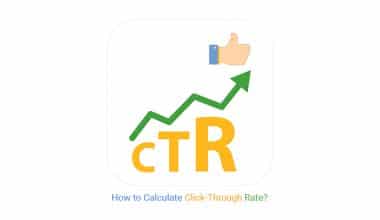Although link development and SEO have always gone hand in hand, creating high-quality links is now more important in terms of ranking. To compete for online exposure and links to your site, you must recognize the significance of link building as a component of a top-notch SEO plan.
In this post, I will help you understand what link building is, its importance, the different kinds of links, and how link building may improve your business.
Key Points
- Building trust with search engines and consumers, drawing in organic traffic, and eventually attaining long-term SEO success all depend on having high-quality backlinks from relevant domains.
- Relevant link-building starts with producing content that is interesting, educational, and valuable.
- Links to your content will come easily if it provides insightful analysis, useful information, or guidance.
- Search engines may punish your website for actions such as purchasing low-quality links, stuffing exact-match anchor text, and neglecting link quality.
- It is best to concentrate on developing a sustainable and organic link profile.
What Are Links?
A link, or hyperlink, is a link that allows users to easily navigate between two web pages on the internet. Through links, you will be able to navigate between different web locations. Links point to a page, blog post, PDF file, or item on a website that should be known to users.
Any word or image that helps you navigate to a new webpage can be used as a link. Links, often known as hyperlinks, are typically used to find new online pages or aid search engines in ranking web pages.
Parts Of A Link
There are four distinct sections of a link.
For instance; <a href = “https://businesslink.co”>
#1. Anchor Tag:
The anchor tag, “a,” is the initial component of the connection. An anchor tag notifies a search engine that a new page will be linked to.
#2. Link Referral Location:
“href,” which stands for hyperlink referral, is the first character in a link referral destination. The URL that appears below is the address of the page to which the hyperlink will take you.
#3. Anchor Text:
When you visit the webpage, the anchor text becomes visible. This text frequently has a visual cue that indicates it is a link that can be clicked. For instance, to indicate to the user that the text is clickable, it is underlined and colored blue.
#4. Closure Tag:
Closure tags are typically used to indicate to search engines that a link has ended.
What Is Link Building?
Link building is the practice of creating backlinks to your website from other websites. To identify what constitutes a quality link, search engines examine the connections between your website’s pages as well as the connections between entire domains.
By including a link to your website, you can tell Google that you are a reliable source on the topic and that your work should be cited. Websites with a greater number of backlinks typically rank higher on Google. This is known as “link juice” by SEOs.
Furthermore, you can employ a variety of link-building strategies; however, link-building is one of the more labor-intensive aspects of SEO work. Note that not every link is created equal. A link from Indeed, for instance, will be far more helpful to you than one from the website of an unidentified travel blogger.
Importance Of Link Building In SEO
Building links to your website improves its SEO and raises its search engine ranking. These are the benefits of link building in SEO:
#1. Links Affect Your Site’s Ranking
Link building is essential to your website’s Google rating. Regardless of how well-written your content is, Google cannot rank your website if it lacks backlinks. Links account for about 17% of your website’s ranking in Local Google searches, after Google My Business. Links are essential for “web crawlers” to discover the existence of your website.
Note that your website will rank higher in Google if you have more backlinks to it than your competitors.
#2. It Improves Your Website Metrics
You can improve your website’s metrics, like PageRank (PR), Domain Authority (DA), Domain Rating (DR), Alexa Rank, etc., by developing links. Increasing the DR is a crucial step in raising the SEO significance of your website.
The domain rating is an important metric for assessing the authority of your website. Gaining do-follow backlinks from high-domain authority pages can help raise the authority and rating of your website.
Note that your website will gain from increasing these metrics, and it will also become more visible and exposed.
Read Also: PR Evaluation Reports: Key Metrics and Best Practices
#3. It Enhances Your Prospects For Sales And Income
Link building can help you increase website metrics and visitors. There are more chances to generate income when there is increased traffic and improved metrics. By doing this, you can raise your website’s ranking in search results and attract more visitors. You’ll be able to increase sales and revenue potential by doing this and selling more goods and services.
#4. Makes Your Brand Stand Out As An Authority
Link building makes you stand out in your industry. Your website will generate more money and sales when it stands out, since it will establish your credibility as a reliable business owner. With an established brand, you will be able to outperform rivals in the industry.
#5. Link Building Expands Your Website’s Exposure And Visibility
In addition to improving your search engine rankings, link development can help generate reliable leads. Additionally, it broadens the audience that sees and visits your website. Link building aids in increasing awareness in a new location if you intend to reach a specialized audience there. This will benefit your company and help you build the reputation of your website as a reliable source.
Read Also: What Is Digital PR Link Building? Why I Recommend It for Your SEO
How To Do Link Building For SEO
While link building for SEO is constantly evolving in the field of digital marketing, there are several tried-and-true techniques that yield consistent, long-lasting effects. Let’s examine the various link-building strategies listed below.
#1. Reciprocal Link Building
Reciprocal link building is essentially two websites exchanging links. It is predicated on the reciprocal interaction that results from the assessment of site ranking, authority, and relevancy. The fundamental concept is that links are traded in order to be posted on websites. However, note that Google may penalize your website for excessive link exchange.
#2. Guest Posting
Guest posting involves writing articles based on niches and including links to other websites. As a result, authority is distributed throughout the sites. In guest posting, keywords and anchor text are crucial components. Google ranks these articles based on a number of factors, including content usefulness and relevance.
Note that excellent guest posts consistently receive good Google ranks. Make sure you avoid stuffing the content with keywords when using these kinds of article marketing techniques.
You can make use of our SEO outreach email template for guest posts:
#3. Forum And Blog Posts
Forum link-building is a fantastic method to raise your level of authority and knowledge in the industry. It can assist you in achieving EAT (Expertise – Authority – Trust), which Google views as a significant component of SEO. Your relevance to the specific specialty rises when you post inquiries and engage with users on open forums by responding to their queries.
What Are The Factors In Link Building?
As a result of research by top SEO experts, here are ten link-building ranking factors that can improve the rankings of your website.
#1. How Many Links Come From The Root Domains?
A website’s principal address is called its root domain. For instance, www.businessyield.com is the root domain of BusinessYield. If all else is equal, a website with 60 links from root domains will rank higher than a website with only 30 links from root domains.
#2. What Is The Domain Age Of The Linking Website?
Google gives websites greater trust the longer they have been on the Internet.
Further solidifying the significance of domain age in link development, SEO experts contend that Google employs a Sandbox algorithm that prevents recently established websites from ranking to their full potential at birth in order to prevent them from degrading their search engine results.
Therefore, an experiment by SEO experts demonstrates that backlinks have greater weight when a website is older.
#3. Links From Different Class-C IPS
A lot of website owners outwitted Google for a short while by building dozens of new websites that connected back to their primary website after realizing that more backlinks from root domains improved rankings.
Subsequently, Google modified its algorithm to prioritize backlinks originating from distinct Class-C IP addresses that point to your website. This basically means that linking from one website to another won’t matter much if you run multiple websites on a single server because they will all share a Class-C IP address.
#4. Anchor Text
Anchor text is hyperlinked text that can be clicked. Put another way, the little underlined (and typically blue) text that you can click on to get to another web page is known as the anchor text, whether you’re reading through a blog post or a web page. Anchor text frequently consists of phrases like “click here” or “read more.”
In light of this, anchor text is crucial since it helps the Google algorithm by signaling that the terms in the link have meaning. This implies that Google considers phrases that are related and highlighted in real life. The likelihood that those terms will be a highly rated keyword for your company increases with the frequency with which they are linked to your page from distinct sources.
Furthermore, using long-tail keywords (keywords consisting of three or more words, like “best PR tools in 2025“) in your anchor text is a smart idea. Make sure the three words you select for your anchor text accurately represent the content you are connecting to. In addition to improving your keyword approach, this will raise the click-through rate of your links, just a side perk of optimizing your anchor text.
Generally speaking, the percentage of keyword anchor links in your external backlink profile shouldn’t be higher than 10%.
#5. Backlinks From Country Domains
The top-level domain (TLD) of the country from which your backlinks originate is a significant factor in how well your website ranks internationally. Your website’s ranking in the UK won’t increase if it solely serves customers in the UK but has backlinks originating from Canada, China, and Egypt.
Nevertheless, if the connections originate from com/uk or.com domains, your website will rank higher in national searches and appear more trustworthy.
Read Also: How Many Backlinks Do I Need to Rank High on Google? Expert Answer
#6. Domain Authority (DA) and Page Authority (PA)
Google is trying to make sure that low-quality websites don’t rank higher than high-quality ones. A domain’s and its individual pages’ trustworthiness is shown by DA and PA, which are the number of high-quality links heading to them.
A website with 750 backlinks from low-quality websites, for instance, will have a lower domain authority (DA) and page authority (PA) than a website with 150 links from high-quality websites.
Sites that have a DA and PA greater than 40 exhibit quality right away. Your website may suffer if the majority of its bulk of backlinks originate from low-quality sites with DA and PA values of 14 or below.
#7. Paid Links
Google’s Terms of Service prohibit buying backlinks, and doing so might result in your website being removed from Google’s search results. Make sure your URLs are no-follow if you’re paying for link placements, as these don’t pass Page Rank and won’t have a negative effect on your website. It is necessary to consider your entire backlink profile because having a diverse range of links increases your authority.
Note that because purchasing backlinks compromises the integrity of a website’s search engine ranking, Google is not afraid to punish those websites.
#8. Link Diversity
It’s common to be labeled a web spam single if the majority of your backlinks originate from one place.
Therefore, you should have links from an array of sources, such as:
- Blogs
- News outlets
- Websites
- Forums
- Blog comments
- Social media
- User profiles
#9. Linking Domain Relevancy
Backlinks originating from relevant themes are prioritized more highly in order to deter website owners from purchasing backlinks from any site with a high DA and PA.
For instance, Google would give BusinessYield a higher weighted backlink if it appeared on a business-related website such as Investopedia. Backlinks from related niches are quite important.
#10. Link Sentiment
Google looks out for keywords to determine whether links mentioning your company are written with a favorable or negative emotion. For instance, if a customer connects to your website from a review they wrote about a bad experience they had with your business, the backlink will be worth less.
Google will give the backlink more weight, the better the sentiment.
Why Is Link Building Important In SEO?
In SEO, link building has several advantages, some of which are as follows:
- Links are used to rank your website.
- Link building helps increase website metrics.
- It helps you stand out with an authoritative brand.
- It increases the visibility and exposure of your site.
- Improves your sales and revenue opportunities.
How Many Types Of Link-Building Are There In SEO?
There are two types of link building, external links, and internal links.
- Internal linking building is used to describe the process of creating links to pages on the same domain or website.
- External linking building involves creating links to external websites or domains from pages on your website.
Read Also: Harnessing the True Potential of Backlinks for Business Growth: The Backbone of SEO
What Is Manual Link Building?
Manual link building is the process of working continuously to try and increase the number of links to a website. Note that increasing a website’s search engine ranking takes time and careful work to achieve.
What Are The Best Link-Building Techniques?

The following are a few often employed link-building strategies:
1. A guest post.
2. Engage in social media activity.
3. Examine the backlink profile of a rival website.
4. Make infographics.
5. Hand out informational visuals.
6. Include links to reliable websites.
You can visit our blog link-building strategies for further details.
Why Is Link Building Essential To Online Success?
Link building is crucial to SEO services because it aids in the discovery of new web pages by search engines and helps them decide which pages deserve a higher ranking in the SERPs.
What Is The Difference Between Inbound Links And Outbound Links?
Links pointing to your website from other websites are known as inbound links. Links pointing to other websites leave your website and are known as outbound links.
While outbound links have the potential to drive users away from your website, inbound links can improve your website’s search engine rankings.
External connections are generally made by including hyperlinks to other websites inside your content, but inbound links can be made in a variety of ways, including content marketing and link-building initiatives.
In the end, if utilized appropriately, both inbound and outbound links can be advantageous for your website. They can raise your website’s search engine rankings and increase traffic, but it’s crucial to ensure the links are relevant and useful for your audience.
What Are The Risks Of Link Building?
Link building strategies need a lot of resources and a significant time and financial commitment. It is not cheap, nor is it quick. More significantly, Google frequently views tiered link building negatively and regards it as a high-risk black hat SEO strategy. Sites that engage in this behavior risk harsh fines.
Related Articles:
What Is Link Farming and Why Is It Considered a Black Hat SEO Tactic?
SEO Outreach Explained: A Beginner’s Guide to Getting Quality Backlinks
Backlink Outreach: Meaning, Types & How to Build a Successful One






